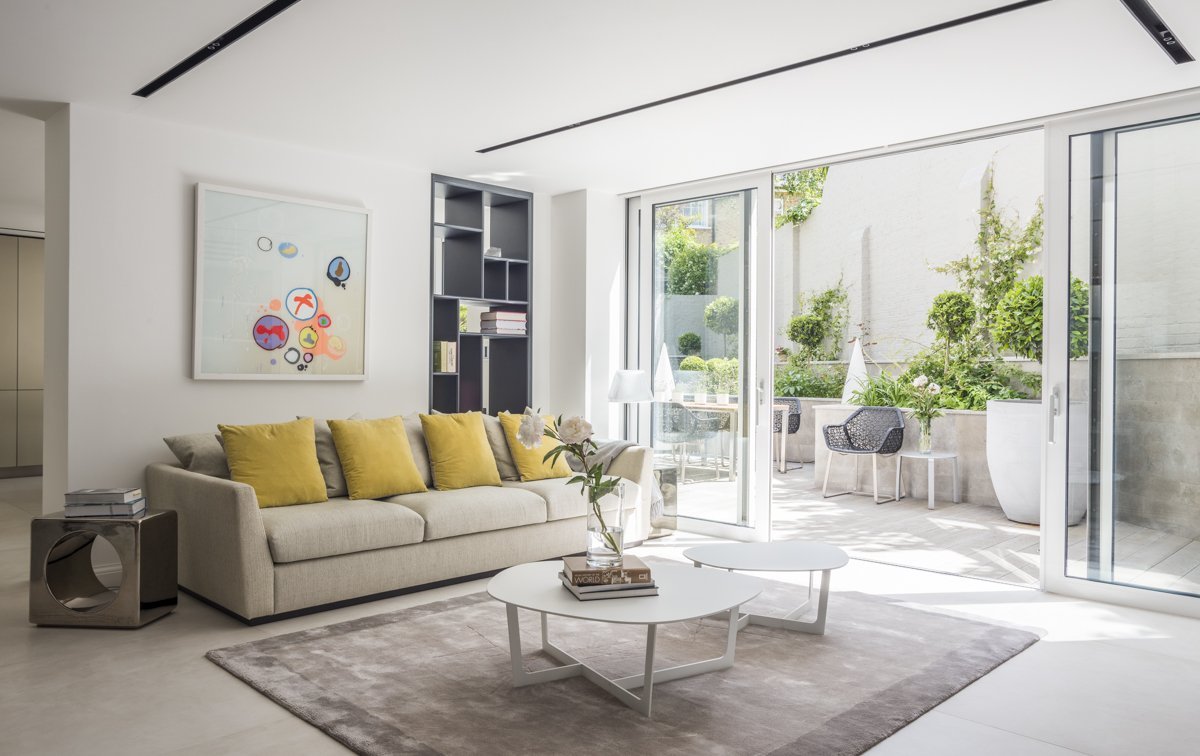Make Your Home Eco-Friendly in 2023—7 Fundamental Principles of Sustainable Interior Design
Sustainable interior design integrates sustainability at the very core of its design philosophy. It is an environmentally conscious approach to residential architecture that focuses on nature and prioritizes the conservation of natural resources.
Sustainability should always be a top priority, not an afterthought, when it comes to interior design. Working in collaboration with architects and engineers, interior designers can make significant contributions when it comes to creating a sustainable future.
Sustainable interior design brings together these seven fundamental principles together in order to minimize the environmental impact of buildings while simultaneously maximizing people’s comfort and quality of life.
1. Be energy efficient.
Energy consumption is among the biggest drivers of climate changes. Lighting, heating, and air conditioning typically take up the most amount of energy. Interior design can do a lot of good in conceptualizing residential spaces that are more efficient in their use of lighting, heating, and air conditioning appliances.
Leveraging natural light and the inherent lighting properties of colors can make any space less reliant on artificial lighting devices. Mirrors and shiny surfaces also do a practical job of reflecting light and making a space brighter.
Making sure that there is good insulation on windows and doors can reduce energy consumption significantly, as it reduces the reliance on air conditioning or heating. Dressing the windows with curtains and blinds can help keep the cold out in the winter and the heat out in the summer.
2. Be water efficient.
Water isn’t the unlimited resource that most people think it is. With the widespread water shortage across the US, maximizing water efficiency is critical for sustainability
For the most part, a sustainable home can ensure optimal water efficiency by implementing built-in water recycling systems that can actively prevent wastage. One of the most practical ways to do this is to install rainwater storage that can collect and recycle rainwater for various household uses.
Low-flow toilets and baths can help homeowners save as much as 50% of their daily water consumption. Other practical home systems that can improve water-efficiency include no-leak taps, high-efficiency nozzles, and pressure regulating devices.
Homeowners can install water-feedback monitors that are designed to provide real-time information about the water consumption of their home.
3. Choose renewable materials.
Choose materials and products that are non-toxic, are non-polluting, and have a low environmental impact. Eco-friendly and organic materials such as wood and stone can be extracted, processed, transported, and disposed without using too much energy and without leaving toxic waste.
Thanks to new manufacturing technologies, eco-friendly organic materials and products bring significant stylistic value to interior design. They can look extremely stylish, and they do a great job at conserving heat
Today bamboo is a highly renewable, fast-growing resource that can easily be replanted, grown, and harvested, leaving a much lower environmental impact. Bamboo is known to be an extremely durable material. It can be processed and turned into all sorts of products and it comes in a wide range of non-toxic colors and textures.
4. Use eco-friendly furniture and soft furnishings
Furniture is a big part of interior design. It impacts both the overall aesthetics and general functionality of a house. Using furniture made from renewable and non-polluting materials maximizes the eco-friendliness of your home.
We love the Heroe’s Becnh by Carbonell Design Studio made from Natural Solid Oak, Natural Wool Bouclé and Recycled Denim Patchwork.
Pieces made from organic and sustainable materials such as natural wood and fast-growing bamboo are often popular furniture choices. Other sustainable furniture materials include rattan and cork, as well as recycled metal, plastic, and industrial waste.
As for furnishings—curtains, cushions, and beddings, made from chemical-free organic cotton are also an easy way to turn any room into a cozy living space. Throws, blankets, and rugs fashioned from locally-sourced wool are natural and stylish choices.
Sourcing locally generally adds to the sustainability of furniture and soft furnishings made from renewable materials. Locally sourced products don’t need to travel long distances. This significantly reduces any carbon emission that results from transporting them.
5. Recycle and repurpose.
Recycling and repurposing are some of the best ways to reduce environmental impact. Any natural resources necessary in producing an already existing object, like a piece of furniture for instance, have already been extracted and processed. Also, any amount of carbon emission necessary for its transport has already been paid for.
Many interior designers, instead of throwing away old furniture, creatively repurpose it into stylish pieces. The number of companies that use environmentally conscious materials in manufacturing their products have also increased in recent years. Today, there are wall decors, sinks, countertops, and all sorts of products that are made from various post-consumer recycled materials such as recycled paper and non-petroleum resin.
On a much bigger scale, adaptive-reuse buildings, alongside sustainable interior design, have seen a rise in popularity in recent years. Adaptive-reuse buildings are essentially existing commercial buildings that are reused outside of their original purpose.
6. Maximize long-term use and longevity
Maximizing long-term use and longevity is critical to ensuring sustainable interior design. Flooring and certain pieces of frequently used furniture should be durable enough to stand up to the everyday wear and tear of home life.
Durable pieces typically have high-quality and have a long lifespan. They are not necessarily trendy as much as they are functional, timeless, and sturdy, which dramatically reduces the amount of unnecessary waste.
Instead of furniture that appeals to the latest trends, high-quality, versatile, and practical pieces tend to retain their usefulness throughout the years and well into the future. Sustainable furniture is even better when it is manufactured from upcycled materials such as cardboard, cork, or even concrete.
7. Health and wellness
For sustainable interior design to be genuinely sustainable, interior designers must not lose track of the biological and psychological needs of people. Much of the modern lifestyle is being lived indoors, so ensuring that the environment is healthy should be a determining factor in the sustainability of a home.
A healthy environment, for the most part, needs good ventilation, good heating and air conditioning, good lighting, and good acoustics. Sustainable interior designers are known to introduce plants and pockets of natural scenery to create biophilic home spaces, which appeals to the human instinct that finds pleasure in natural settings.
Another important thing to consider is indoor pollution. Indoor pollution can be kept to a minimum by choosing clay-and-starch eco-paint, cork flooring, bio-glass, and organic furniture that do not off-gas pollutants called volatile organic compounds.
Sustainable interior design has exploded in popularity over the recent years, owing to the pressing need for environmental preservation. It has been adopted by countless homeowners across the country and around the globe, as well as by multiple companies, government entities, and non-governmental organizations. As a result, we now see multiple prominent design firms that specialize in eco-friendly construction.
The United Nations identifies people, planet, and prosperity as the three primary pillars of development. In service of these three pillars, sustainable interior design insists on meeting the needs of the present without compromising the ability of future generations to meet their own.
If you’re interested in knowing more about interior design, get in touch with us at KNOF Design today. KNOF Design is a prominent name in the field of interior design, having graced the cover of ELLE Decoration and several other renowned international magazines.












